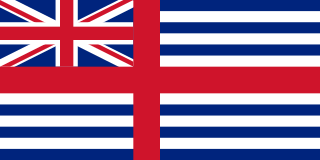James Colbeck was the lead stonemason on the Ross Bridge, Ross, Tasmania. Both he and Daniel Herbert received full pardons for their work on the bridge.
Ross Bridge is an historic bridge in the town of Ross in central Tasmania, Australia, completed in July 1836. It crosses the Macquarie River.

Tasmania is an island state of Australia. It is located 240 km (150 mi) to the south of the Australian mainland, separated by Bass Strait. The state encompasses the main island of Tasmania, the 26th-largest island in the world, and the surrounding 334 islands. The state has a population of around 526,700 as of March 2018. Just over forty percent of the population resides in the Greater Hobart precinct, which forms the metropolitan area of the state capital and largest city, Hobart.

Daniel Herbert (1802–1868), a Tasmanian convict, was a skilled stonemason who, with co-convict James Colbeck, oversaw the building of the Ross Bridge and embellished it with interesting carvings.
Born in Dewsbury in the West Riding of Yorkshire in 1801, Colbeck worked as a stonemason in London on Buckingham Palace from 1822 to 1825. Newly married and with a young son, Colbeck grew tired of living apart from his wife and child, and returned to Dewsbury.

Dewsbury is a minster town in the Metropolitan Borough of Kirklees, in West Yorkshire, England. It is to the west of Wakefield, east of Huddersfield and south of Leeds. It lies by the River Calder and an arm of the Calder and Hebble Navigation.

The West Riding of Yorkshire is one of the three historic subdivisions of Yorkshire, England. From 1889 to 1974 the administrative county, County of York, West Riding, was based closely on the historic boundaries. The lieutenancy at that time included the City of York and as such was named West Riding of the County of York and the County of the City of York.

Buckingham Palace is the London residence and administrative headquarters of the monarch of the United Kingdom. Located in the City of Westminster, the palace is often at the centre of state occasions and royal hospitality. It has been a focal point for the British people at times of national rejoicing and mourning.
Unable to find work in the area and desperate to feed his starving family, Colbeck, John Blezzard and George May broke into a house in Huddersfield stealing food, clothing and money. Having succeeded once, they repeated their rash act again in a home in Saddleworth and were caught.
Sentenced at the York Assizes on 22 March 1828 to transportation for life for burglary, Colbeck was shipped from London to Van Diemen's Land (Tasmania) aboard the Manlius.

Van Diemen's Land was the original name used by most Europeans for the island of Tasmania, part of Australia. The name was changed from Van Diemen's Land to Tasmania in 1856.
In 1830 and 1831, Colbeck worked on the construction of the New Orphan School in Hobart. In May 1831, he was sent to Ross with an army of men to repair the bridge. Since it was made of timbers, there was no work for him. However, he worked for William Kermode who was busy building a house in the neighbourhood, the first 'Mona Vale.' Colbeck's earnings were to be banked by Kermode, whose son Robert Quale was going to arrange passage for Colbeck's wife and his son, as soon as he got to England.

Hobart is the capital and most populous city of the Australian island state of Tasmania. With a population of approximately 225,000, it is the least populated Australian state capital city, and second smallest if territories are taken into account. Founded in 1804 as a British penal colony, Hobart, formerly known as Hobart Town or Hobarton, is Australia's second oldest capital city after Sydney, New South Wales. Prior to British settlement, the Hobart area had been occupied for possibly as long as 35,000 years, by the semi-nomadic Mouheneener tribe, a sub-group of the Nuennone, or South-East tribe. The descendants of these Aboriginal Tasmanians often refer to themselves as 'Palawa'.
In March 1833, Colbeck was recommended to superintend the construction of the Ross Bridge but it was not until May 1835 that Colbeck became the overseer. Although given detailed instructions from the government appointed architect, Charles Atkinson, Colbeck ignored them. Atkinson stated: 'Is it possible for an ignorant unlettered plodding scion of his class to understand the construction of the most difficult and scientific structures invented by man?'
Colbeck and Daniel Herbert received their emancipation on the completion of the bridge. Colbeck received a Free Pardon on 28 October 1841.
Colbeck appeared in the 1843 Tasmania census as living at Long Plains, West Tamar. The date or route of his return to England is unknown.
Colbeck remarried in June 1850 at Wakefield (District), Yorkshire, England and is recorded as residing in Dewsbury in the UK 1851 census. His death is registered on 17 February 1852 and he was buried in St. Matthews burial ground, Dewsbury.








